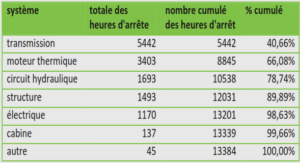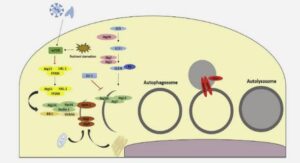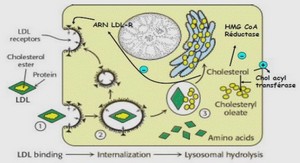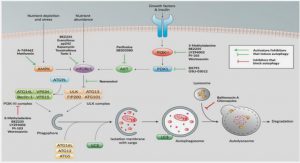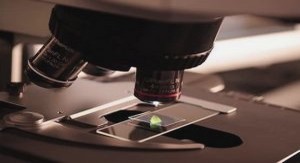Du B sur Ca des foraminifères planctoniques au pH des eaux de surface
Core top calibration of the partition coefficient KD for boron in the planktonic foraminifer G. ruber
Introduction It has been recently shown that the B/Ca of planktonic foraminifers can be used to reconstruct past seasurface pH variations. These reconstructions are based on the speciation of boron in the ocean. In aqueous solution, boron mainly exists as two species, boric acid B(OH)3 and borate ion B(OH)4- , that have significantly different isotopic compositions and which relative proportions are highly pH-dependent. The boron isotopic composition of marine carbonates falls close to the isotopic composition of the dissolved borate ions, hence B(OH)4- is thought to be the species chiefly incorporated in marine carbonates, following the mechanism proposed by Hemming and Hanson (1992): € CaCO3 + B(OH)4 — ⎯⎯ KD→ Ca(HBO3 ) + HCO3 — + H2O (1) Incorporation of borate ion in the foraminiferal carbonate may be controlled by the apparent partition coefficient KD, defined as: € KD = HBO3 2— /CO3 2— [ ]CaCO3 B(OH)4 — /HCO3 — [ ]seawater (2) Zeebe and Wolf-Gladrow (2001) and Yu et al. (2007) simplified this KD expression assuming that in calcite, [CO₃²⁻]≈[Ca2+]: € KD = [B/Ca]CaCO3 B(OH)4 — /HCO3 — [ ]seawater (3) Because the [B(OH)4- )/HCO3- ] of seawater is highly pH-dependent, one can potentially reconstruct pH if one knows both the B/Ca ratio of calcareous marine shells and the partition coefficient KD (it actually requires, in addition, that one can estimate past seawater alkalinity, which several authors have inferred from salinity reconstructions based on coupling foraminifer δ¹⁸O and Mg/Ca-Temperature (e.g. Yu et al., 2007; Tripati et al., 2009). 114 Several studies based on inorganically precipitated calcite or on foraminifer shells have shown that calcite B/Ca and ambient water [B(OH)4- )/HCO3- ] are indeed related, which apparently brings some additional support to the model of boron incorporation in calcite. Figure 46, for instance (redrawn from Yu et al., 2007) shows that Globigerina bulloides and Globorotalia inflata obtained from core top sediments (mostly in the northern Atlantic Ocean) display strong, linear B/Ca-[B(OH)4- /HCO3- ] relationships (no such correlation is observed, however, for the downcore calibration of Globigerinoides ruber B/Ca). Relations estimated assuming various, constant values of KD (slope) are plotted on figure 46 (doted lines). Taking into account uncertainties associated with B/Ca and [B(OH)₄⁻ ∕ HCO₃⁻]sw, neither regression lines passes through the origin, showing that KD is variable within each species. Other studies performed on core top material (e.g. Yu and Elderfield, 2007; Foster, 2008), cultured foraminifers (e.g. Allen et al., 2012) or based on downcore calibration (e.g. Tripati, 2009) have confirmed (i) that KD is not constant, (ii) that it is species-specific, and (iii) that it may vary for a given species (e.g. KD shows about 40% variability for G. bulloides, ranging from 0.0006-0.0009, and shows about 80% variability for G. ruber, ranging from 0.0010 to 0.0018).Yu et al. (2007) suggested that KD could depend upon seawater conditions, and they put a special emphasis on temperature, for which empirical calibration had shown strong apparent relationships with KD (Figure 47; the weak relationship found for G. bulloides was assigned to the higher analytical uncertainties associated to measurement of low-level B/Ca and Mg/Ca). However, data obtained by different authors are somewhat conflicting regarding the possible temperature dependence of KD. Globigerinoides ruber is a shallow dwelling species currently used in paleoceanographic studies to reconstruct past sea surface conditions in tropical and subtropical oceanic areas. As far as G. ruber is concerned, Yu et al. (2007), based on their down-core calibration exercise, concluded that its KD increases with increasing temperature (coherent to what they also observed for core top calibration of G. inflata and G. bulloides KD; Figure 47). Foster (2008), however, using core top material, found an opposite, negative trend of G. ruber KD change with temperature. Tripati et al. (2009), based on a down-core calibration, independent from that performed by Yu et al. (2007), concluded that pH reconstruction using species G. ruber (and Globigerinoides sacculifer) was only weakly dependent of the temperature effect on the KD. Finally, culture experiments of G. ruber (together with Orbulina universa, and G. sacculifer) showed no significant relationship between B/Ca and temperature, but showed the potential influence of other parameters such as salinity, total boron and carbonate ion concentration (Allen et al., 2011, 2012). Two elements are striking when considering these conflicting results and the inherent difficulty of drawing some conclusion about what ultimately controls KD variations in G. ruber and other planktonic species. (i) First of all, these studies are based on highly different strategies. As far as proxy calibration is concerned, we believe that down-core calibration is a weak approach, because it rests upon reconstructed seawater conditions with large propagation of uncertainties associated to the analyses of several, indirect proxies (e.g. δ¹¹B, δ¹⁸O, Mg/Ca). The use of core top material or shells derived from controlled, culture experiments are more likely to provide a robust dataset to understand boron incorporation into foraminiferal shells; (ii) Yet, if one considers only core top calibrations and culture experiments, they still lead to conflicting conclusions. It has been sometime put forward that (i) culture experiments may place foraminifers into some stress, and that (ii) the range of some environmental changes tested during these experiments largely exceed natural variability experienced by the organisms in their natural environment. Both these elements may have an impact on the conclusion drawn from these experiments, especially when it comes to trace element incorporation. As far as core top calibrations are concerned (the subject of the present study), one can identify several potential drawbacks in the strategies followed by the small number of studies that recently dealt with B/Ca and KD calibration. For instance, seven out of the eleven core tops used by Foster (2008) have been obtained from Ocean Drilling Sites, although it is known that ODP coring does not allow a very good recovery of surface sediment. The age control on most of these sites would not allow to carefully address this issue since age models are most of the time based on low-resolution, orbital tuning only. As far as the core top calibration exercise of Yu et al. (2007) is concerned (for G. bulloides and G. inflata), forty-one out of the forty-three core tops used are located in a small area of the North Atlantic Ocean, where regional oceanographic conditions are such that surface temperature covaries very strongly with either salinity or carbonate ion (CO₃²⁻), making it difficult to address possible, non-temperature effects on the incorporation of boron into foraminiferal calcite. In order to provide a more exhaustive database for understanding the incorporation of boron in G. ruber shells, we decided to perform an independent study of the B/Ca of G. ruber shells picked from wellpreserved core-top sediments from the three major ocean basins.
Sample selection
We selected well-preserved marine sediment core tops from high sedimentation rate areas of the tropical and sub-tropical Atlantic, Indian and Pacific oceans, covering a wide range of temperature and salinity changes. In order to check if dissolution was not a major issue on Mg/Ca and B/Ca, we controlled the saturation state of the deep water overlying our sample sites by estimating the carbonate ion saturation (ΔCO₃²⁻). Bottom water ∆CO32- was estimated from the GLODAP data set (see Hydrographic data). Holocene ages of our core top samples were verified by radiometric dates, foraminifer’s counts or isotopic stratigraphy as defined in MARGO (Kucera et al., 2005)(Figure 48, Table 10). In order to get a good control on calcification temperatures, δ¹⁸O and Mg/Ca were also measured on G. ruber shells
1.2. Oxygen isotopic analyses
Oxygen isotopic ratios were obtained on 6 to 30 G. ruber shells (white, sensu stricto) from the 250-315 µm size fraction to avoid possible size effects. Shells were ultrasonically cleaned in methanol to remove clays and other impurities. They were roasted under vacuum for 45 minutes at 380°C to remove organic matter, and then analysed with a Finnigan ∆+ mass spectrometer. Results are expressed as δ18O in per mil versus V-PDB with respect to NBS 19 and NBS 18 standards. Carbonate standard replicate measurements show an analytical reproducibility of ±0.05‰ (1σ). Mean standard deviation of replicate G. ruber analyses is ~0.11‰.
1.3. Mg/Ca and B/Ca analyses
We gently crushed 20 to 25 shells of G. ruber (white, sensu stricto) from the 250-315 µm size fraction in order to open the chambers and allow any chamber fill to be removed during the following cleaning steps (Barker et al., 2003). After crushing, clays were removed by successive Milli-Q water and ethanol ultrasonic washes, and an oxidative step (H2O2, 100°C) was applied in order to remove organic matter. Subsequently, leaching with a dilute acid 0.001 M HNO3, was performed, to remove any contaminants that may have been adsorbed onto the shells. Finally, samples were dissolved in 350 µL of 0.1 M HNO3.

